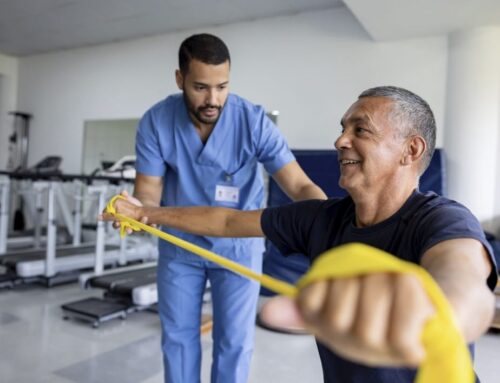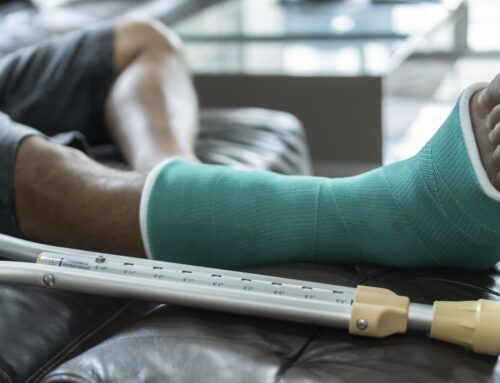Foot pain limits your activities, so it can be hard to ignore. If you are experiencing outer foot pain or pain on the back of your foot, you may have peroneal tendonitis.
There are more than 100 tendons in the foot, but the two that cause peroneal pain are located alongside the outer ankle bone and the side of your foot. These tendons can become inflamed and painful from overuse or an injury such as an ankle sprain.
The peroneal tendons are bands of tissue that support your feet and protect your ankles from sprains. They allow you to move your foot in an outward motion. Because the tendons sit close together, they can begin to rub together and cause discomfort. In some cases, just one of the tendons can become irritated.
Peroneal tendonitis is common among people who play sports that involve repetitive ankle motion, like long-distance running and walking. Athletes often have issues with their ankle tendons because of frequent and long-term overuse. People with high arches are also susceptible to peroneal pain because one of the tendons runs underneath the foot to the inside of the arch.
Common symptoms of peroneal tendonitis
A peroneal tendon injury can be a chronic condition that develops over time or an acute injury that occurs suddenly. You may feel pain or an aching sensation along the tendons on the outer part of your foot.
Other symptoms of peroneal tendonitis include:
- Pain that increases with activity
- Pain when moving the foot around
- Swelling around the ankle
- Weakness in the ankle
- Skin that is warm to the touch
Treatment for outer foot pain
If you are experiencing peroneal tendon discomfort, there are a few methods you can try at home to ease the pain. In cases of minor ankle pain, these do-it-yourself treatments can help alleviate soreness and inflammation within a few weeks:
PRICE remedy
The PRICE method is recommended for any sudden muscle or joint injury, but it is also helpful with peroneal pain. The protocol includes Protection, Rest, Ice, Compression and Elevation. It is recommended as a solution for the early stages of ankle pain. If it does not help within several days, professional treatment from a foot and ankle physician may be necessary.
Orthotics or ankle brace
A brace or a soft cast can provide stability for your affected foot. When more stabilization is needed, a boot will help immobilize the ankle and take the weight off the tendons so they can heal.
Anti-inflammatory medication
Patients can often reduce pain and inflammation by using over-the-counter, non-steroidal, anti-inflammatory drugs (NSAIDs), like aspirin, ibuprofen or naproxen.
Gentle stretching
Stretching the peroneal tendons and surrounding muscles in the calf and foot can promote flexibility and increase tendon elasticity. After a resting phase of recovery and PRICE, stretching can help improve your range of motion.
This YouTube video highlights multiple exercises you can do at home. The host explains how each movement affects different areas of the calf and foot. The exercises include:
- Sitting calf stretch
- Eversion motion (bending the foot outward) exercise
- Standing calf stretch
- Heel-toe raises
- Single leg balance
- Step stretches
If you feel acute pain or weakness or suspect you have a torn ankle tendon, please check with a specialist before incorporating exercise into your routine.
Peroneal pain prevention
There are several ways to prevent peroneal tendon injury. Stretching before physical activity can help warm up and loosen muscles around the foot and ankle. Being overweight can contribute to foot problems, so maintaining a healthy weight helps prevent unnecessary pressure on your tendons. Never push through the pain when working out. Wear an ankle brace if you have had issues with ankle tendonitis.
Your feet are the foundation of good health and mobility, so it is essential to take care of them.
When to see a foot and ankle specialist
In some cases, peroneal tendonitis can lead to a rupture of the tendon if it is not treated by a professional. See a foot and ankle specialist if your pain has not been alleviated with at-home remedies or if the pain becomes worse. If you cannot put weight on your foot, you experience a snapping or popping sensation or you see skin discoloration on your foot or ankle, seek medical attention immediately.
Schedule an orthopaedic appointment
Dr. Eric Lukosius of Cary Orthopaedics specializes in foot and ankle care, including diagnosing and treating peroneal tendon injury and tendonitis. He approaches patients with compassion and strives to provide relief from ailments.
At Cary Orthopaedics, our goal is to identify the cause of your foot or ankle pain and determine your treatment options, so you can get back to doing what you love.






